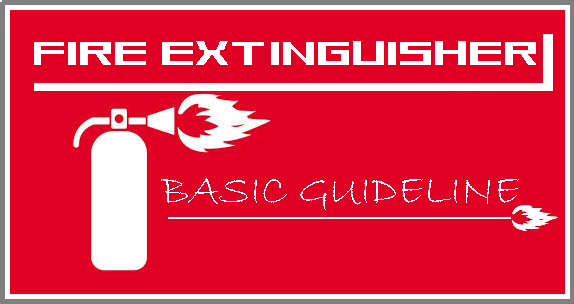Fire Extinguisher: Basic understanding | Type of Fire Extinguisher | Checklist

The article describes basic understanding of fire extinguisher, type and use in organization. This will helps you to secure your self against fire incident at your workplaces.
Basic Guide line for use Fire Extinguishers
- Stay calm. Help others to stay calm.
- Notify to seniors immediately.
- Call the fire department as quickly as possible without endangering your escape from the fire. You may have to call from outside.
- Avoid smoke-filled passageways. If you must pass through a smoke-filled area, crawl on hands and knees. If possible, wrap a wet towel around your nose and mouth.
- Close doors when leaving an area. Never open a door that is hot to the touch
- If your clothes do catch fire, DO NOT RUN. Roll on the floor or wrap yourself in a fire blanket or rug.
Type of fire extinguisher
- Fire extinguishers are classified according to a particular fire type and are given the same letter and symbol classification as that of the fire.
- Type A – combustible wood, cloth, paper, rubber, and plastics.
- Type B – flammable liquids, oil, grease, and paint thinners.
- Type C – energized electrical equipment
- Type D – combustible metals (Mg, Ti, Na, Li, K)
- Multipurpose Extinguishers are effective against types A, B, and C fires
- To effectively operate an extinguisher, think P-A-S-S
- P — pull the pin
- A– aim the hose and the base of the fire
- S – squeeze the handle
- S – sweep the hose back and forth
- Never use water on a Type B fire. These liquids float on water and, thus, water can spread the burning liquid. Water makes hot grease splatter, and can result in burns. Cover the burning grease with sand, baking soda, or with the metal lid of the frying pan.
- Never use water on a Type C fire. Water can cause a severe electric shock
Checklist for self awareness:
- Know all exits ways.
- Practice drills seriously.
- Know locations of safety equipment and extinguishers.
- Report any safety hazards to the senior person.
- Be sure smoke detectors are works.
- Evacuate immediately from workplace, if you are not trained for fire fighting.